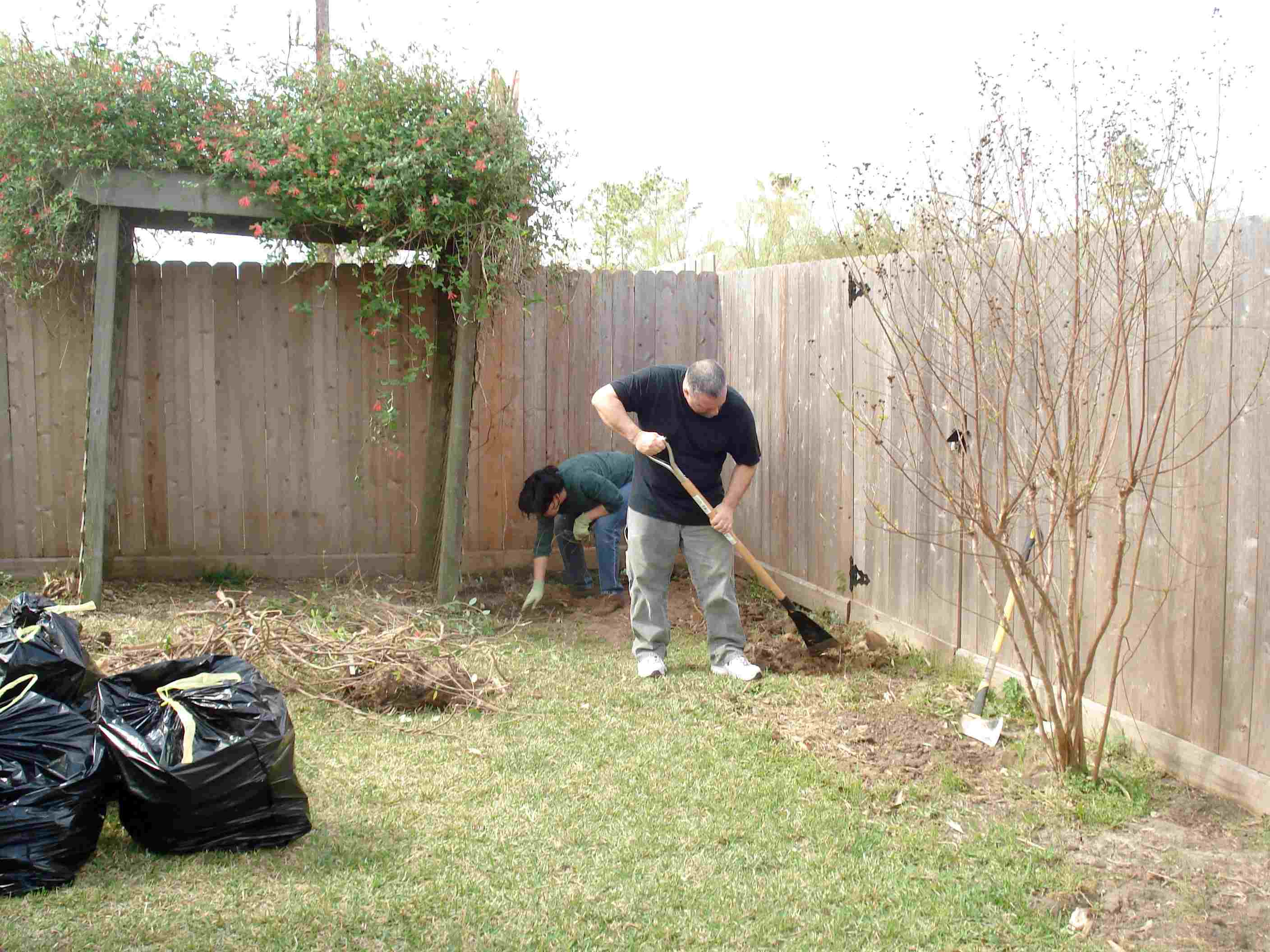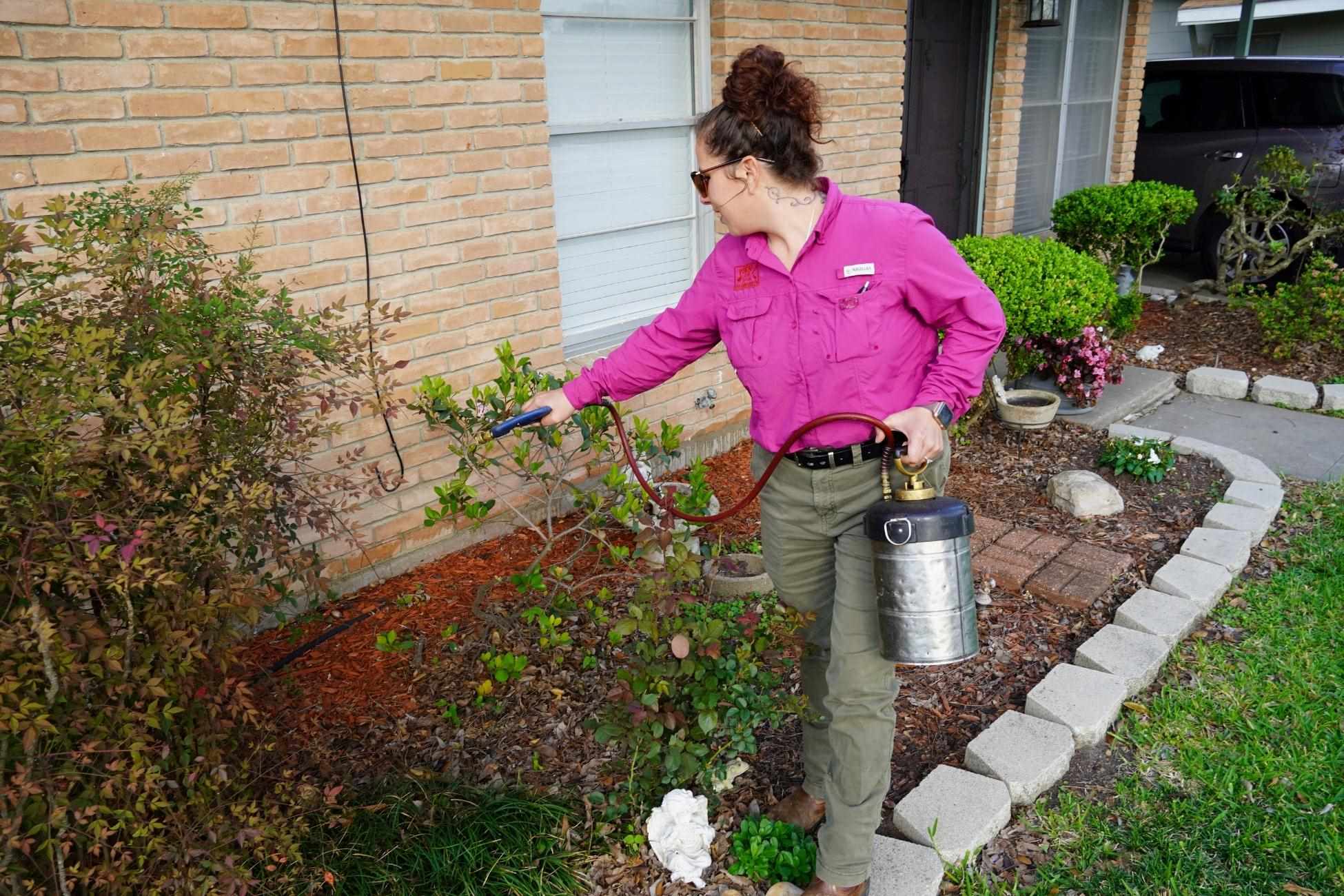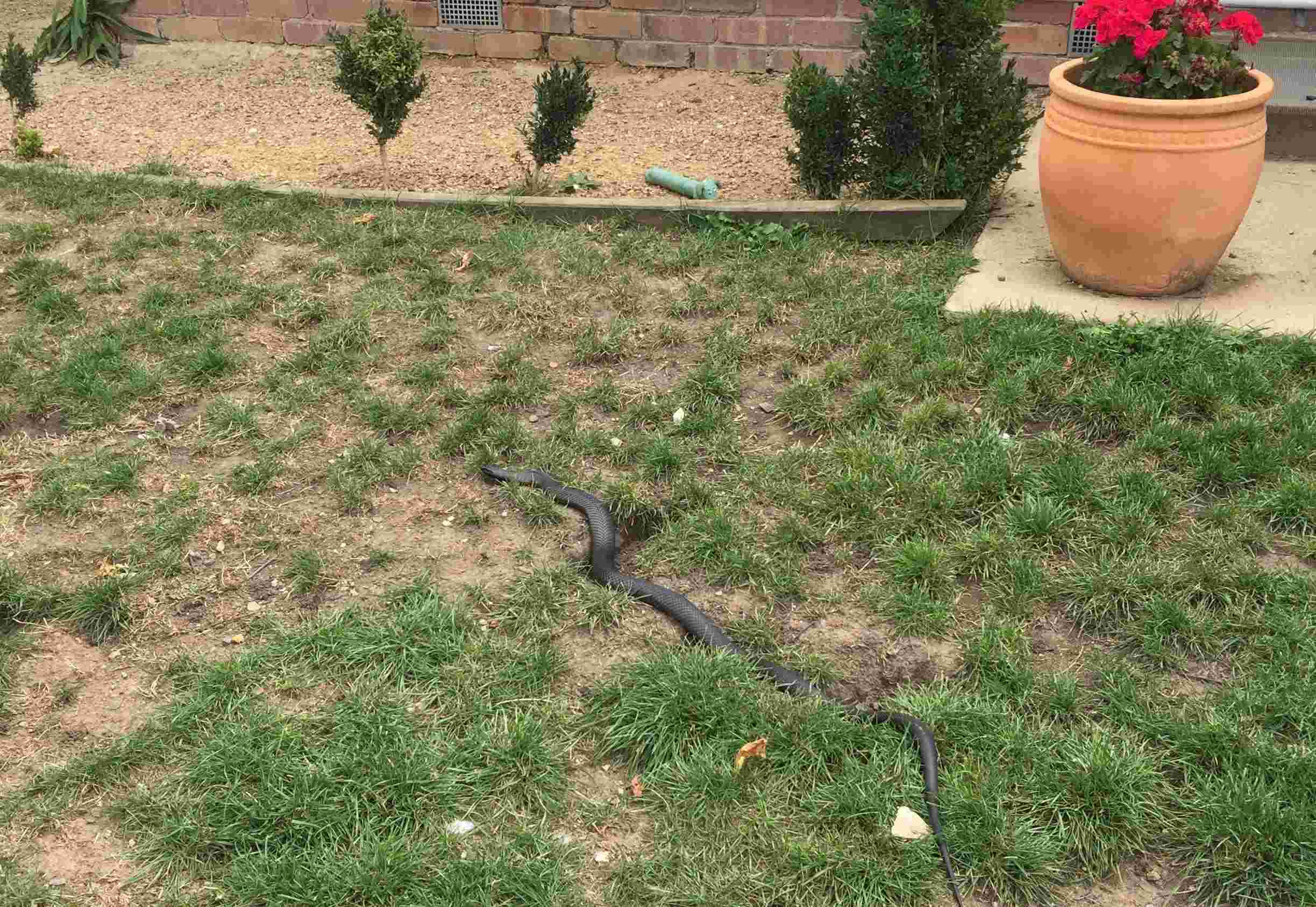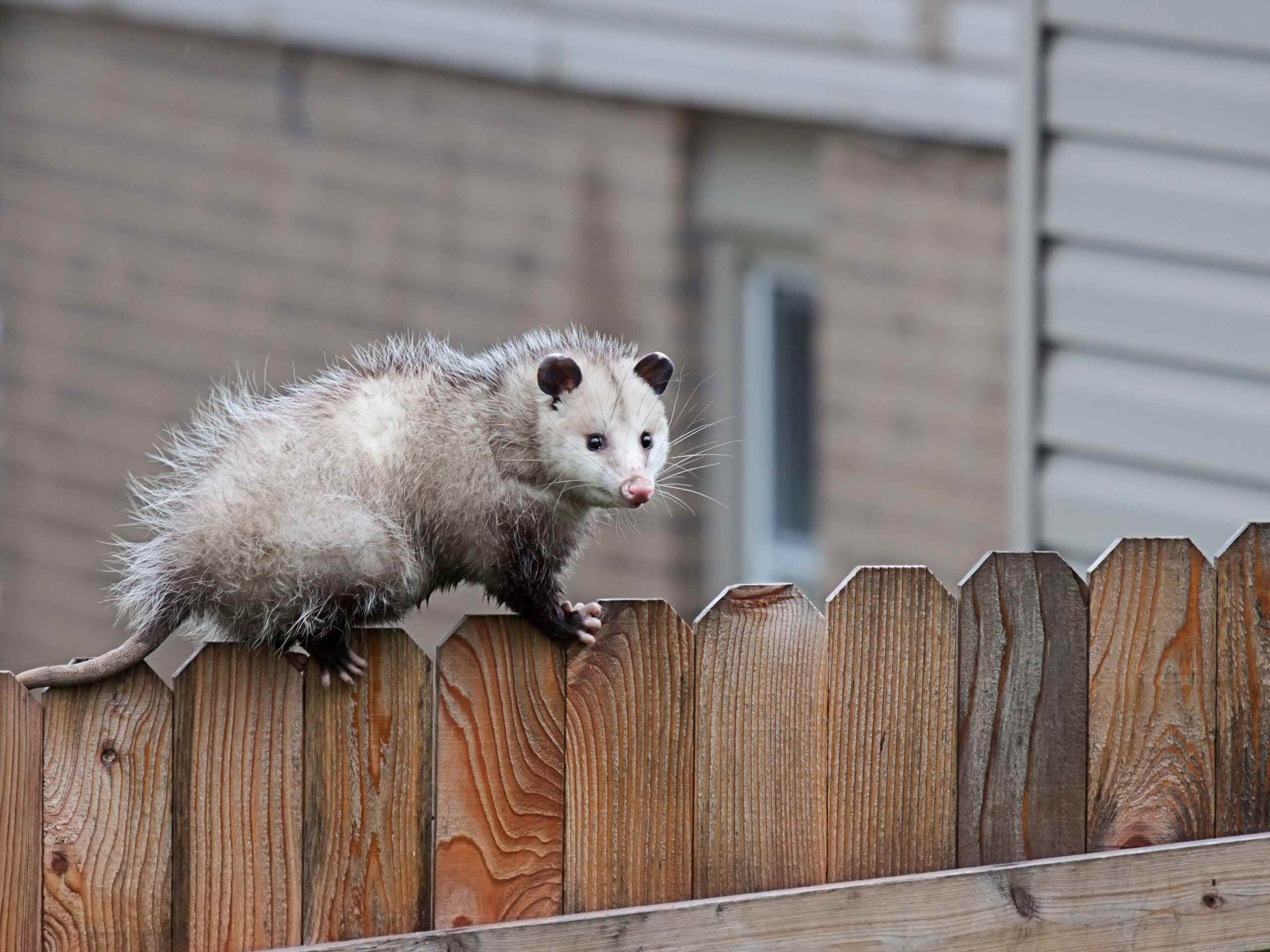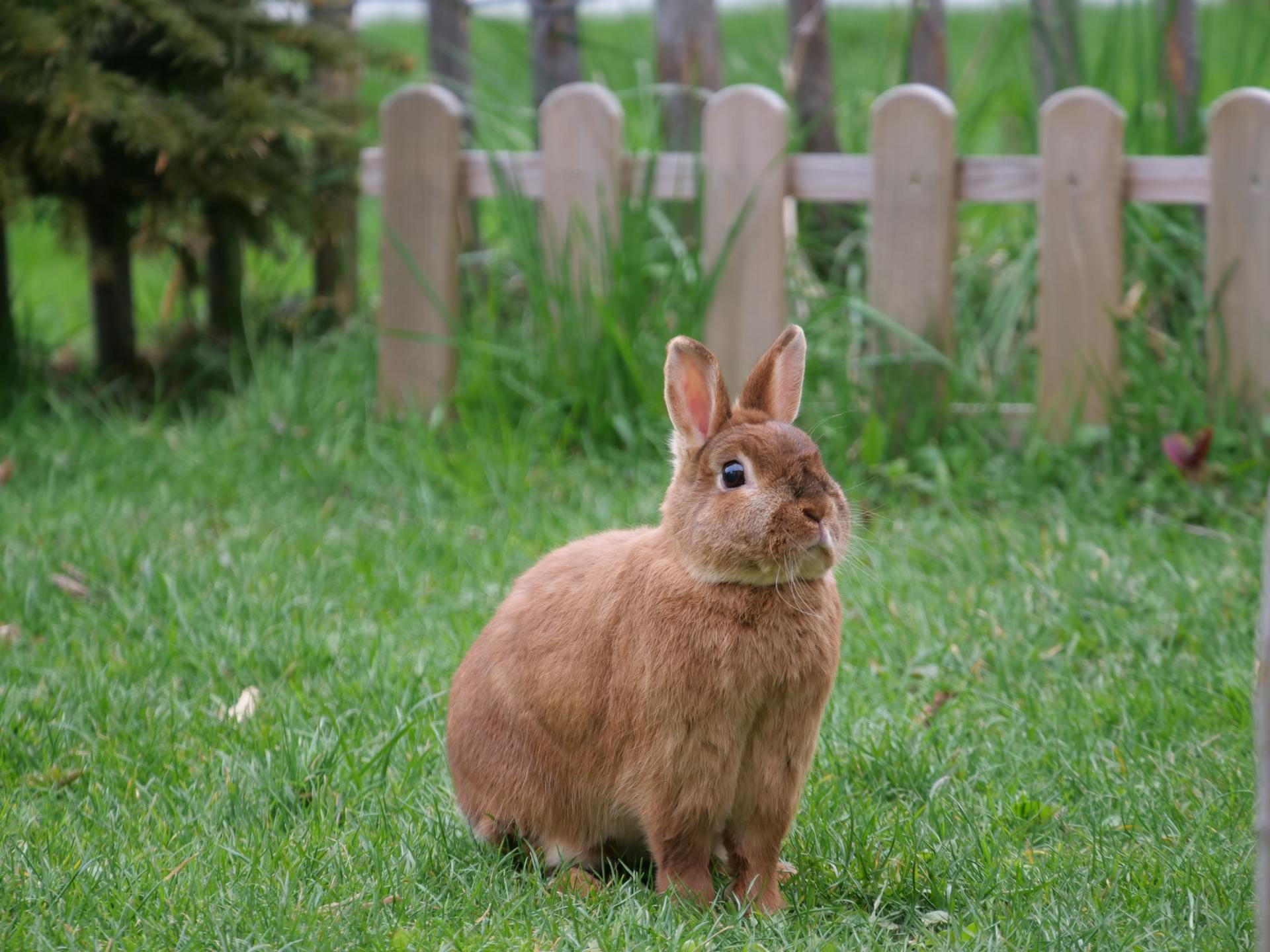Home>Gardening Tips and Tricks>How To Get Rid Of Mouse In Backyard


Gardening Tips and Tricks
How To Get Rid Of Mouse In Backyard
Published: August 5, 2023
Looking for effective solutions to get rid of mice in your backyard? Our expert tips and techniques for problem-solving will help you tackle this nuisance once and for all.
(Many of the links in this article redirect to a specific reviewed product. Your purchase of these products through affiliate links helps to generate commission for Chicagolandgardening.com, at no extra cost. Learn more)
Table of Contents
Introduction
Welcome to our comprehensive guide on how to get rid of mice in your backyard. Mice can be a nuisance, invading your outdoor space and causing damage to plants, furniture, and other outdoor structures. However, with the right knowledge and strategies, you can effectively eliminate mice and create a mouse-free backyard environment.
Identifying and addressing a mouse problem is crucial to maintain a clean, safe, and enjoyable backyard space for you and your family. This guide will provide you with practical tips and solutions to tackle the issue in an effective and humane manner.
Mice are small rodents that are known for their ability to reproduce quickly and adapt to various environments. They can squeeze through tiny openings, making it challenging to keep them out of your backyard. Therefore, it’s important to understand their behavior and take proactive measures to prevent them from becoming a nuisance.
In this guide, we will explore various methods to control and eliminate mice in your backyard. We will discuss how to identify the signs of a mouse infestation, understand their behavior, and implement strategies to deter them from your outdoor space. From removing attractive elements in your yard to sealing entry points, using natural repellents, setting traps, and even seeking professional help, we will cover all the necessary steps you can take to ensure a mouse-free backyard.
Whether you’re dealing with a mild mouse problem or a more persistent infestation, this guide will equip you with the knowledge and tools to tackle the issue effectively and restore peace to your backyard. So, let’s dive in and explore the best methods for getting rid of mice in your outdoor space!
Identifying the Mouse Problem
Before you can effectively tackle the mouse problem in your backyard, it’s important to identify if you indeed have a mouse problem. Mice can be sneaky and can often go unnoticed until the infestation becomes apparent. Here are some signs to look out for:
- Mouse droppings: The presence of small, pellet-like droppings is a clear indication of mice in your backyard. These droppings are typically dark-colored and can be found near food sources or nesting areas.
- Gnawed items: Mice have a constant need to chew to keep their teeth sharp. Look for signs of gnawed wires, wood, or plastic in your outdoor space.
- Tracks and footprints: Mice leave behind visible tracks and footprints, especially in areas with moist soil or dusty surfaces. These tracks can help you determine the size and number of mice present.
- Nesting materials: Mice create nests using shredded materials such as paper, fabric, or plants. Look for these nesting materials in hidden corners or storage areas of your backyard.
- Strange noises: Mice are notorious for causing scratching or scurrying sounds, especially at night when they are most active. Pay attention to any unusual noises coming from your backyard.
- Foul odor: An unpleasant, musky odor may indicate the presence of mice in your backyard. This odor is often caused by their urine and droppings.
If you notice any of these signs, it’s important to act quickly to prevent the mouse population from growing and causing further damage. Identifying the extent of the infestation will also help you determine the course of action needed to eliminate the problem.
Please note that identifying a mouse problem in your backyard does not necessarily mean your home is also infested. Mice are opportunistic creatures that can move between outdoor and indoor spaces, so it’s essential to address the issue promptly to minimize the risk of them entering your living areas.
Now that you have identified the signs of a mouse problem, let’s move on to understanding mouse behavior and how it can help you effectively deter them from your backyard.
Understanding Mouse Behavior
In order to effectively deal with a mouse problem in your backyard, it’s important to have a basic understanding of their behavior. Mice are small, agile creatures that are constantly seeking sources of food, water, and shelter. By understanding their behavior patterns, you can implement strategies to deter them from your outdoor space. Here are some key behaviors and characteristics of mice:
- Nocturnal activity: Mice are primarily nocturnal creatures, meaning they are most active during the night. This is when they search for food, water, and nesting materials. Keep this in mind when implementing control measures.
- Curiosity and exploration: Mice are naturally curious and will explore their surroundings, including your backyard. They are skilled climbers and can quickly navigate through shrubs, fences, and other outdoor structures.
- Quick reproduction: Mice have a high reproductive rate, with a female mouse capable of producing several litters in a year. This means that a small mouse problem can quickly escalate if not addressed promptly.
- Food hoarding: Mice have a habit of hoarding food for later consumption. They will seek out food sources and transport small amounts to their nests or hiding spots. This behavior can lead to extensive damage in your backyard as they gnaw through packaging and containers to access food.
- Excellent sense of smell: Mice have a keen sense of smell and can detect food and potential threats from a distance. They are attracted to areas with easily accessible food sources, such as uncovered trash cans, bird feeders, or compost piles.
- Adaptable and persistent: Mice are highly adaptable creatures that can quickly adjust to changes in their environment. They can squeeze through small openings, making it important to seal off potential entry points in your backyard.
By understanding these behaviors, you can implement strategies that disrupt their access to food, water, and shelter, making your backyard less attractive to them. In the next sections, we will discuss practical steps to remove attractive elements, seal entry points, use natural repellents, set traps, and when to seek professional help. Together, these methods will help you regain control of your backyard and create a mouse-free environment.
Removing Attractive Elements in the Backyard
One of the first steps in getting rid of mice in your backyard is to remove any attractive elements that may be drawing them in. Mice are constantly on the lookout for food, water, and shelter, so making your outdoor space less appealing to them can help deter their presence. Here are some effective ways to remove attractive elements:
- Secure garbage bins: Mice are attracted to easy sources of food, such as uncovered trash cans. Make sure your garbage bins have tight-fitting lids and are securely sealed to prevent access to food.
- Clean up bird feeders: If you have bird feeders in your backyard, be aware that spilled birdseed can attract mice. Regularly clean up any spilled seed and consider using squirrel-proof feeders to minimize access to food sources.
- Store pet food properly: Mice are not picky eaters and will readily consume pet food left out in the open. Store pet food in airtight containers and avoid leaving it out overnight.
- Remove fallen fruit: If you have fruit trees in your yard, fallen fruit can be a tempting feast for mice. Regularly clean up fallen fruit to eliminate a potential food source.
- Clear debris and clutter: Mice are excellent at finding shelter in hidden corners or piles of debris. Keep your yard clean and remove any clutter, such as stacked firewood or unused outdoor furniture, which can provide hiding spots.
- Trim shrubs and bushes: Mice are skilled climbers, so overgrown shrubs, bushes, and ivy can provide them with easy access to your home. Regularly trim these plants to eliminate potential pathways.
- Secure compost piles: Compost piles can attract mice with their organic matter. Make sure to secure your compost piles with lids or wire mesh to prevent access.
By removing these attractive elements, you are reducing the likelihood of mice being drawn to your backyard. However, keep in mind that prevention is key, so it’s important to maintain these practices regularly to ensure a mouse-free environment.
Next, we will discuss the importance of sealing entry points to prevent mice from accessing your backyard and potentially entering your living spaces.
Sealing Entry Points
In order to effectively control mice in your backyard, it’s crucial to prevent them from gaining access to your outdoor space in the first place. Mice are opportunistic creatures that can squeeze through small openings and gaps, so sealing entry points is an important step in keeping them out. Here are some key areas to focus on when sealing entry points:
- Inspect your property: Conduct a thorough inspection of the exterior of your home and backyard to identify potential entry points. Look for gaps or cracks in the foundation, walls, windows, and doors.
- Seal gaps and cracks: Use a good quality silicone caulk or weather-stripping to seal any gaps or cracks you find. Pay special attention to areas where utility pipes, vents, or cables enter your home or outdoor structures.
- Repair damaged screens: Check your windows and doors for any tears or holes in the screens. Repair or replace damaged screens to prevent mice from entering through these openings.
- Install door sweeps: Install door sweeps on exterior doors to create a barrier against mice. These sweeps help seal the gap between the door and the floor, minimizing access points.
- Secure vents and chimneys: Cover vents and chimneys with fine mesh screens to prevent mice from entering through these openings. Ensure that the screens are securely affixed to avoid any gaps.
- Keep garage doors closed: Mice are known to find their way into garages where they can often find shelter and food sources. Keep your garage door closed whenever possible to reduce the risk of them entering your backyard.
- Use wire mesh: In areas where mice are likely to chew through materials, such as around cables or pipes, consider using wire mesh to create a barrier. This can help prevent them from gaining access.
Sealing entry points is an ongoing process, as new openings may appear over time. Regularly inspect your backyard and home, especially during seasonal changes, to identify and address any new entry points. By taking proactive measures to seal these openings, you can greatly reduce the likelihood of mice entering your backyard and potentially making their way into your living spaces.
Next, we will explore natural repellents that can be used to deter mice from your outdoor space.
Using Natural Repellents
If you’re looking for a more natural approach to deter mice from your backyard, there are several natural repellents you can use. These repellents utilize scents and substances that mice find unpleasant, discouraging them from entering your outdoor space. Here are some effective natural repellents:
- Peppermint oil: Mice dislike the strong scent of peppermint oil. Soak cotton balls in peppermint oil and place them in areas where mice are likely to enter or hide, such as near entry points or in feeding areas. Refresh the oil regularly to maintain its effectiveness.
- Mothballs: Mice are repelled by the strong odor of mothballs. Place mothballs in enclosed areas like sheds, garages, or under decks to deter mice. Remember to handle mothballs with caution as they can be toxic to pets and children.
- Ammonia: Mice are deterred by the strong smell of ammonia. Soak cotton balls in ammonia and place them in areas where mice are active. However, be cautious when using ammonia as it can irritate the respiratory system, so make sure to keep them out of reach of children and pets.
- Ultrasonic devices: Ultrasonic devices emit high-frequency sounds that are unpleasant to mice and other pests. These devices can be installed in your backyard to create a sonic barrier and deter mice from entering. Choose devices designed for outdoor use and follow the manufacturer’s instructions.
- Natural predator urine: Mice are wary of potential predators, and the scent of predator urine can deter them. You can find natural predator urine, such as from foxes or coyotes, in stores or online. Spray or sprinkle the urine around your backyard, focusing on areas where mice are most active.
- Plant-based repellents: Certain plants have natural repellent properties that mice dislike. Planting herbs like mint, lavender, and rosemary can help deter mice. Additionally, you can scatter the leaves or place sachets of dried herbs in areas where mice are active.
It’s important to note that while natural repellents can be effective, they may need to be combined with other control methods for optimal results. Additionally, natural repellents may need to be reapplied regularly to maintain their effectiveness, especially after rainfall or when the scent starts to fade.
Remember, prevention is key, so implementing a combination of these natural repellents and other control measures will help create an environment that mice find unwelcome in your backyard.
Next, we will discuss the use of traps as an effective way to capture and eliminate mice in your outdoor space.
Setting Traps
If you have identified a mouse problem in your backyard, setting traps can be an effective method to capture and eliminate these pests. Traps allow you to directly target mice and remove them from your outdoor space. Here are some types of traps to consider:
- Snap traps: Snap traps are one of the most common and effective types of traps for mice. They consist of a spring-loaded mechanism that is triggered when a mouse touches the bait. Place the traps along walls, fences, or areas where mice are likely to travel, with the trigger end facing towards the wall.
- Glue traps: Glue traps are sticky surfaces that capture mice when they step onto them. Place these traps along known mouse pathways or near entry points. It’s important to check these traps regularly and release or dispose of captured mice humanely.
- Live traps: Live traps allow you to catch mice without harming them, allowing for their safe release far away from your property. These traps typically consist of a cage or box with a one-way entry mechanism. Once caught, release the mice in a suitable location away from your backyard.
- Bucket traps: Bucket traps are DIY traps that utilize a bucket partially filled with water. Place a ramp or plank leading up to the edge of the bucket and add bait at the end. When the mouse tries to reach the bait, it will fall into the water and be unable to climb out.
When setting traps, it’s important to consider the following tips for optimal effectiveness:
- Bait selection: Use bait that is appealing to mice, such as peanut butter, chocolate, or dried fruits. Secure the bait to the trap with a small amount of string or adhesive to ensure it stays in place.
- Placement: Set traps in areas where mice are active, such as along walls, near entry points, or where you have noticed droppings or signs of gnawing.
- Regular checking: Check the traps daily to see if you have captured any mice. Take proper precautions when handling traps and wear gloves to protect yourself from any potential diseases mice may carry.
- Humane disposal: If using live traps, release captured mice far away from your property in a suitable outdoor area.
Remember, trapping is an ongoing process, and it may take time to capture all the mice in your backyard. Be patient and persistent, regularly setting and checking traps until you no longer catch mice.
If your mouse problem persists or if you prefer professional assistance, it may be necessary to seek the help of pest control professionals. We will explore this option in the next section.
Calling Professional Help
If your efforts to control mice in your backyard have been unsuccessful or if you prefer to leave the task to experts, calling professional help is a viable option. Pest control professionals have the knowledge, experience, and resources to effectively handle mouse infestations and provide long-term solutions. Here are some reasons why you may consider calling professional help:
- Expertise: Pest control professionals are trained in mouse behavior, identification, and effective control methods. They can accurately assess the extent of the infestation and develop a customized plan to eliminate the mice in your backyard.
- Safe and efficient methods: Professionals use safe and environmentally-friendly methods to control mice, minimizing risks to your health and the environment. They have access to specialized equipment and products that are not readily available to the general public.
- Long-term solutions: Pest control professionals not only eliminate existing mouse infestations but can also provide preventive measures to ensure that mice are less likely to return to your backyard in the future. This may include sealing entry points, implementing exclusion measures, or providing recommendations for ongoing maintenance.
- Time and convenience: Dealing with a mouse infestation can be time-consuming and frustrating. Hiring professionals allows you to focus on other aspects of your life while they take care of the problem efficiently and effectively.
- Guaranteed results: Many pest control companies offer guarantees or warranty on their services. If mice return after treatment, they will provide additional services or re-evaluate the situation at no extra cost.
When choosing a pest control professional, it’s important to do thorough research and select a reputable and licensed company. Seek recommendations from friends, family, or neighbors, and read online reviews to ensure they have a proven track record of success in mouse control. Obtain multiple quotes and ask about their methods, guarantees, and any potential risks associated with the treatment.
Remember, professional help should be considered when the mouse infestation in your backyard is severe or persistent, or if you prefer to have experts handle the situation. They will help you regain control of your outdoor space and provide you with peace of mind.
In the next section, we will conclude our comprehensive guide on getting rid of mice in your backyard and provide some final thoughts.
Conclusion
Dealing with a mouse infestation in your backyard can be challenging, but with the right knowledge and strategies, you can effectively eliminate mice and restore peace to your outdoor space. By following the steps outlined in this guide, you can take proactive measures to identify the mouse problem, understand their behavior, remove attractive elements, seal entry points, use natural repellents, set traps, and seek professional help if needed.
Remember, prevention is key to maintaining a mouse-free environment. Regularly inspect your backyard, remove potential food and water sources, and seal any openings that mice could use to gain access. Implement the use of natural repellents and traps as needed, and consider seeking professional assistance for severe or persistent infestations.
Taking a multi-faceted approach to mouse control will increase your chances of success. It’s important to be patient and persistent, as it may take time to completely eliminate mice from your backyard. However, by implementing these strategies, you can create a space that is unattractive and inhospitable to mice, ensuring a clean, safe, and enjoyable outdoor environment for you and your family.
We hope this comprehensive guide has provided you with valuable insights and practical solutions to get rid of mice in your backyard. By implementing the tips and strategies outlined here, you can take control of the situation and enjoy a mouse-free backyard once again.
